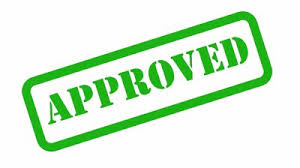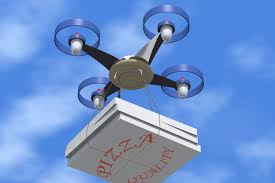 Well, this is it, folks!
Well, this is it, folks!
Thank you to everyone for your participation for the past 52 weeks. Your comments have been thought provoking and helpful to many. And with so many companies beginning to seriously consider their strategy for conversion to ISO9001:2015, these weekly posts will be there to look back upon as we move forward.
With the New Year upon us, it’s so fitting that we end our 52 Week Challenge with a positive topic to get us moving in 2016!
“10 Improvement
10.1 General
The organization shall determine and select opportunities for improvement and implement any necessary actions to meet customer requirements and enhance customer satisfaction.” Our previous weeks’ discussions have focused on the core management system, its components and processes and establishing objectives and achieving them. Now what? Improvement, of course.
“These shall include:
a) improving products and services to meet requirements as well as to address future needs and expectations.” This is just one example of many where all areas of the organization should be involved in the management system. Areas such as engineering and sales have many opportunities to address, and effectively do address them throughout the year. But by forgetting to include this in the management system, the work gets done, but the leaders of the management system may forget to connect the dots and realize this.
“b) correcting, preventing or reducing undesired effects;” This is a rather significant change from ISO9001:2008 in that corrective and preventive action have been discussed in a different way. The traditional preventive action is now linked to risk based thinking. But the requirements for improvement include correcting, preventing or reducing undesired effects.
“c) improving the performance and effectiveness of the quality management system.” This is mainly referring to the objectives of the management system and whether or not the organization is meeting them. Action is expected to continually improve the management system. But there are also opportunities to improve the effectiveness of the management system such as improving the internal audit process, for example.
“NOTE: Examples of improvement can include correction, corrective action, continual improvement, breakthrough changes, innovation and re-organization.” This is a nice clarification because demonstrable continual improvement can sometimes be elusive. This list provides the user with some examples to help them define their own improvement.
“10.1 Nonconformity and corrective action
10.2.1 When a nonconformity occurs, including any arising from complaints, the organization shall:
a) react to the nonconformity and, as applicable:
1) take action to control and correct it;
2) deal with the consequences;”
This is a nice restructuring of the corrective action requirements in my opinion, because it clearly states the allowance that not every single nonconformance necessarily requires a root cause analysis and elaborate investigation and action plan. Many organizations have struggled with this and have wasted resources maintaining a burdensome corrective action process because they are fully employing all resources to every problem, without consideration of importance, significance or impact.
“b) evaluate the need for action to eliminate the cause(s) of the nonconformity, in order that it does not recur or occur elsewhere, by:
1) reviewing and anlysing the nonconformity;
2) determining the causes of the nonconformity;
3) determining if similar nonconformities exist, or could potentially occur;”
Following the logic discussed above, the organization should evaluate how far to take each of its corrective action investigations. This allows the organization to more effectively execute their corrective action process. If we can weed through the significant issues and dedicate some serious time and resources to them, we can have a meaningful impact on our overall quality. But if we spend our time running each and every problem through a full root cause analysis, we lose the ability to distinguish between the levels of significance, and also are likely to lose the engagement of the people required to work on corrective actions as well.
“c) implement any action needed;
d) review the effectiveness of any corrective action taken;”
These are two distinctly different concepts and in many cases, this can be the weak link in an effective corrective action process. Not only must the organization identify a cause and ensure that the prescribed actions are taken, but that the actions actually worked. Many corrective actions’ closure process includes confirmation that all the action items were completed, but miss the critical step of confirming that the action items actually solved the problem.
“e) update risks and opportunities determined during planning, if necessary;
f) make changes to the quality management system, if necessary;”
These two areas take time to evolve within the management system. These are learnings from our management system – where we are successful and where we fail. We should learn from our failings and implement changes to our management system so that it can mature and improve.
“Corrective actions shall be appropriate to the effects of the nonconformities encountered.” This is, of course, self explanatory.
“10.3 Continual improvement
The organization shall continually improve the suitability, adequacy and effectiveness of the quality management system.
The organization shall consider the results of analysis and evaluation, and the outputs from management review, to determine if there are needs or opportunities that shall be addressed as part of continual improvement.”
This is where we stretch to when all else is going well. As the management system matures and stabilizes, we are required to continually reach higher and higher to improve.
I am grateful for your participation in this full year’s discussion and wish you all the very best in 2016! Keep improving!
 It’s very likely that your management system did not include a contingency for a global pandemic. But it is a fantastic opportunity for us to learn something from it.
It’s very likely that your management system did not include a contingency for a global pandemic. But it is a fantastic opportunity for us to learn something from it.
 Well, this is it, folks!
Well, this is it, folks! 9.3 Management Review
9.3 Management Review  9.2 Internal audit (9.2.1, 9.2.2)
9.2 Internal audit (9.2.1, 9.2.2) 9.1.2 Customer satisfaction
9.1.2 Customer satisfaction 9 Performance evaluation
9 Performance evaluation 8.7 Control of nonconforming outputs
8.7 Control of nonconforming outputs 8.6 Release of products and services
8.6 Release of products and services 8.5.6 Control of changes
8.5.6 Control of changes 8.5.5 Post-delivery activities
8.5.5 Post-delivery activities